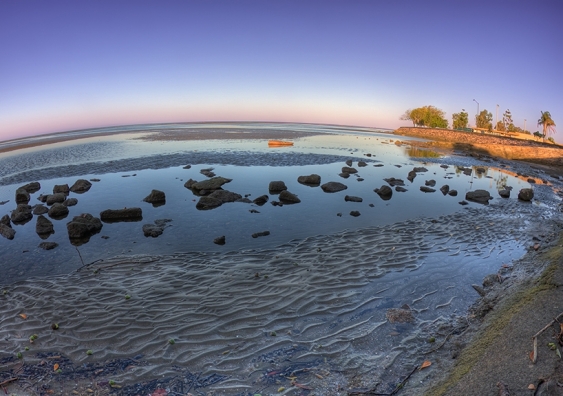Mudflats and other intertidal ecosystems are shrinking
In a world-first study of its kind, UNSW and UQ researchers used artificial intelligence and extensive satellite imagery to find that intertidal zones around the globe have receded.
In a world-first study of its kind, UNSW and UQ researchers used artificial intelligence and extensive satellite imagery to find that intertidal zones around the globe have receded.

Dr Nick Murray
School of Biological Earth and Environmental Sciences
0414 815 788
n.murray@unsw.edu.au
A joint study between UNSW Sydney and the University of Queensland (UQ) has mapped the world’s intertidal zones for the first time to reveal a significant loss of the crucial ecosystem, as reported in Nature today.
Using artificial intelligence and extensive satellite imagery, the study showed that global foreshore environments declined by up to 16 per cent between 1984 and 2016.
Dr Nick Murray, with UNSW’s School of Biological, Earth and Environmental Sciences said tidal flats – which he defined as mudflats, sand flats or wide rocky reef platforms – had reduced in size partly because of coastal development and partly because of climate change.
“Our analysis showed that in places like China, where coastal developments in the intertidal zone have been occurring for decades, extensive losses of tidal flats have occurred,” he said.
“Coastal development is widespread throughout the world and developments are often built on the areas on and around tidal flat ecosystems.
“Meanwhile, sea level rise has been shown to cause the loss of tidal flat ecosystems, particularly where they cannot migrate naturally to accommodate changing sea levels.”
Professor Richard Fuller, from UQ’s School of Biological Sciences, said the zone between low and high tide lines protected more than 625 million people around the world from storms and sea level rises.
“Identifying areas where intertidal zones are being lost to development and rising seas is critical to safeguard coastal communities,” Professor Fuller said.
“Our research will have significant international benefits, with more than 1.4 billion people expected to live in coastal areas by 2060.”
The study used artificial intelligence known as machine-learning to analyse more than 700,000 satellite images to map changing global distribution of intertidal areas over a 30-year period.
Dr Murray said it was made possible by a unique collaboration of conservation biologists, and marine, coastal, remote sensing, and computer scientists.
“It required nearly one million hours of computation, run on 22,000 machines via the Google Earth Engine,” Dr Murray said.
“We applied machine learning classifiers to every pixel from each satellite image available to us from along the world’s coastlines.”
The findings lay the ground-work for a global coastal monitoring system for international conservation and sustainable development targets.
“A system like this could enable scientists, governments and the wider community to take stock of the services that coastal ecosystems provide,” Dr Murray said.
“An online app, the Intertidal Change Explorer, offers open access to the dataset and supports its use to understand and conserve coastal ecosystems worldwide.”
The research, published today in Nature (DOI: 10.1038/s41586-018-0805-8), was supported by a philanthropic donation from Google.
The collaboration also included UQ’s Professor Stuart Phinn, Mitchell B. Lyons, The Australian Institute of Marine Science’ Renata Ferrari, and Google developers Nicholas Clinton, David Thau Michael DeWitt, and Renee Johnston.